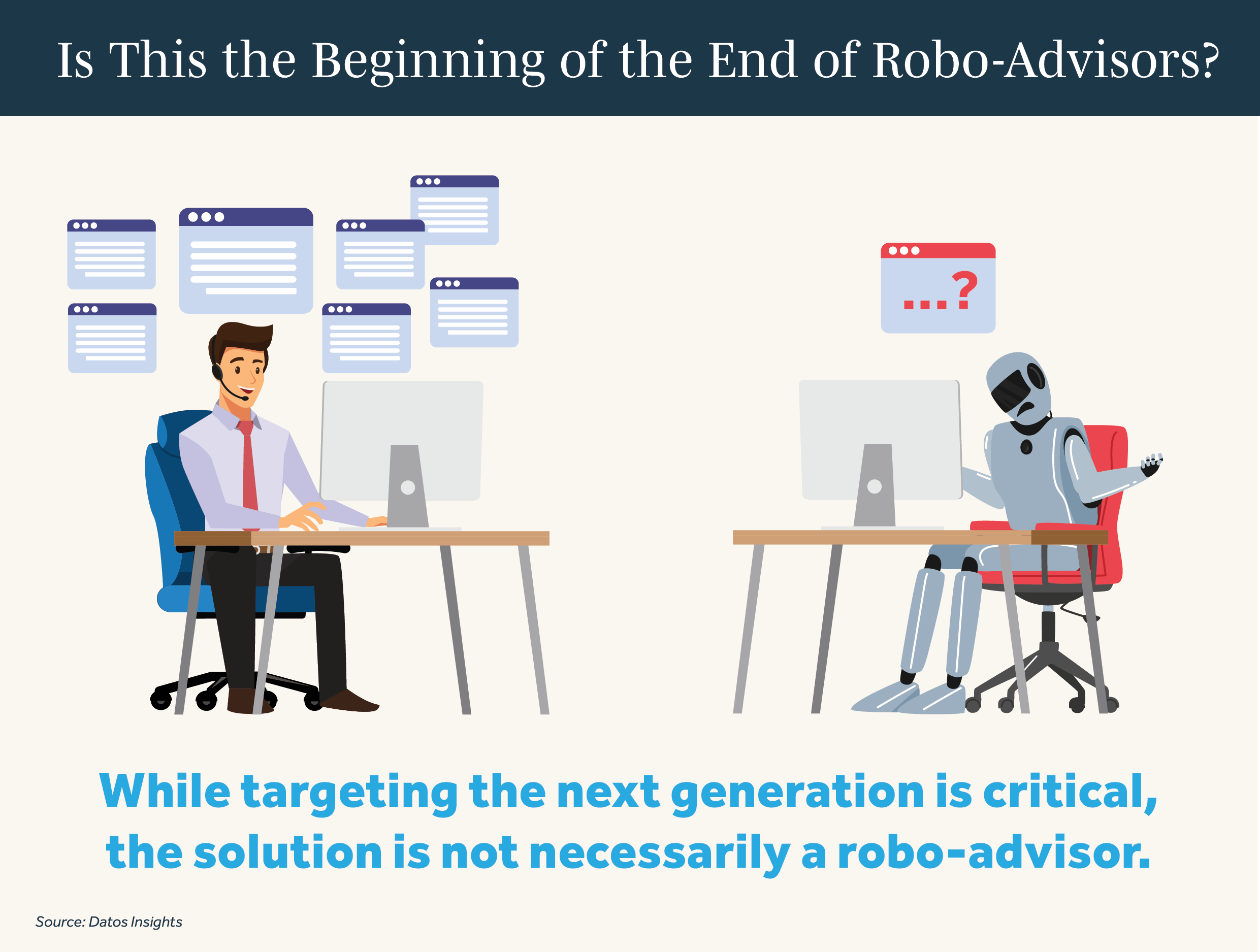Goldman Sachs recently announced the sale of its robo-advisor platform, Marcus Invest, to Betterment. This follows the sale last year of Goldman Sachs’ Personal Financial Management (PFM), formerly United Capital Financial Partners, a registered investment advisor (RIA) catering to the mass-affluent market and JPMorgan’s decision to shut down its own robo-advisor, YouInvest, in December.
So, what is the underlying story here? Is this the beginning of the end of robo-advisors, or is something else at play? The answer lies more in “who” rather than “what.” Large financial institutions are realizing that robo-advisors are the wrong play; they attract a client segment they don’t really want.

What happened with Goldman Sachs and JPMorgan?
When JPMorgan shut down YouInvest in December 2023, it cited weak demand in its decision. What’s interesting to note is Jamie Dimon, CEO of JPMorgan Chase, previously said that YouInvest reached US$55 billion in assets under management (AUM) without doing any significant marketing and also claimed the product wasn’t even good enough yet. The fact that a giant like JPMorgan could reach that scale, not do much marketing, and still not be profitable shows how tough this space is. Now, Goldman Sachs is exiting the robo-advisor business following the sale of PFM to Creative Planning, also citing the difficulties in this space.
A common denominator of the challenges with the robo-advisor product is the unexpected customer acquisition costs. This has been an underestimated hurdle that only a few platforms, like Betterment, have been able to successfully navigate. However, this only speaks to the supply side challenges of this equation. The real problem with robo-advisors is weak demand from its intended target—next-generation clients, including millennials and Gen Zers.
One factor in driving early momentum in the robo-advisor market was its perceived appeal to the elusive next generation of clients. In the 2010s, headlines were speaking of the massive wealth transfer from baby boomers to millennials, and wealth management firms were eager to launch cost-effective solutions to bring this client segment into their businesses, often through relationships with existing clients. Enter the robo-advisor, a digital-first, automated investment solution to the rescue.
Fast forward a decade later, and the shining promise of robo-advisors has dimmed, and firms have figured out that targeting the next generation of clients is not as easy as building a robo-advisor and hoping they will come. In hindsight, it was an obvious solution built off the misconception that this client segment doesn’t want to engage with a financial advisor, and a technology solution to manage investments would be good enough.
For Goldman Sachs and JPMorgan, the move away from robo-advisors suggests strategic actions aimed at refocusing efforts on the high-net-worth and ultra-high-net-worth segments, and in the case of Goldman Sachs, its custody business, which is now better positioned as it no longer is competing with its potential clients.
Conclusion
Despite divestment from two big names in financial services, there is still a place in the market for robo-advisors as demonstrated by the dominance of Betterment, but it’s not necessarily with next-gen clients. In Datos Insights’ Top 10 Wealth Management Trends of 2024, we noted that growth-oriented firms must prioritize attracting and retaining the next generation of clients by integrating technology into their journey. In fact, 58% of wealth management executives said that targeting younger investors with a self-directed or robo-advised offering was “extremely important.” However, digging into this insight further, we discovered that while targeting the next generation is critical, the answer is not necessarily a robo-advisor platform.
Next-gen clients want more ways to digitally manage their financial lives, but they still want personalized advice and the opportunity to work with a human. The challenge lies in profitability: How do wealth management firms offer this level of service to clients who typically don’t have the account balances to make it profitable for firms? In an upcoming report, we identify what services firms are offering these in-demand clients and how they’re succeeding. Spoiler alert: Robo-advisor platforms are at the bottom of the list!
For more information, contact me at [email protected].

